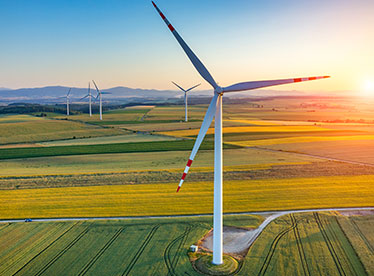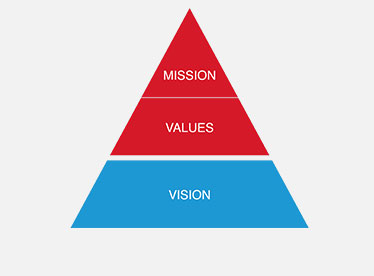-
Products
-
Transportation & Mobility Solutions
Transportation & Mobility Solutions
At Hitachi, we engineer industry-leading transportation and mobility solutions by leveraging decades of knowledge and using high-quality automotive material and components.
-
Energy Solutions
Energy Solutions
We believe the only solution for fulfilling the growing power requirements of industries and society is through a comprehensive portfolio of sustainable energy solutions and delivering innovative high-efficiency energy systems.
-
IT Infrastructure Services
IT Infrastructure Services
Hitachi’s state-of-the-art IT products and services are known to streamline business processes which result in better productivity and a higher return on investment (ROI).
-
Social Infrastructure: Industrial Products
Social Infrastructure: Industrial Products
Within the industrial sector, Hitachi is consistently delivering superior components and services, including industrial and automation solutions, useful in manufacturing facilities.
-
Healthcare & Life Sciences
Healthcare & Life Sciences
At Hitachi, we believe that healthcare innovation is crucial to a society’s advancement. A strong healthcare sector is often considered an inseparable element of a developed society.
-
Scientific Research & Laboratory Equipments
Scientific Research & Laboratory Equipments
Hitachi focuses on extensive research and development, transformative technology, and systems innovation to unfold new possibilities and create new value through scientific endeavors that strengthen the connection between science and social progress.
-
Smart Audio Visual Products
Smart Audio Visual Products
Since 1956, Hitachi audio visual products have provided state of the art solutions to consumers all over the world. It has been our pleasure to design competitive products at the lowest possible prices while maintaining our industry-leading quality standards for your comfort and enjoyment.
-
View All Products
Hitachi Products & Solutions
Hitachi, a technology leader in the U.S., offers a diverse set of products and solutions, and breakthrough technologies for smart manufacturing, green energy and mobility solutions that empower governments, businesses, and communities.
-
Transportation & Mobility Solutions
- Social Innovation Solutions
-
About Us
-
Hitachi in the U.S.A.
Hitachi in the U.S.A.
Discover information about the Hitachi group network across the Americas, upcoming events and sustainability endeavours, CSR policies, and corporate government relations.
-
About Hitachi Group
About Hitachi Group
Explore our leadership team, investor relations, environmental vision, and sustainability goals. Learn how Hitachi is leveraging its research & development capabilities for social innovation across industry verticals.
-
Hitachi in the U.S.A.
- News Releases
- Case Studies
- Careers
- R&D
Hitachi America, Ltd. Focusing On Energy Storage For Wind And Solar Farms
- - Company’s Long Life Lead Acid Battery Contributes To Complete Storage Solution - -
Tarrytown, NY, May 3, 2010, Hitachi America, Ltd’s Industrial and Infrastructure Systems Division today announced that it is focusing on Energy Storage for the Smart Grid to complement Wind and Solar Farms. Hitachi has completed eight projects since March 2000 and will complete another one this year. As the emergence of the Smart Grid gains momentum and the use of intermittent renewable energy sources such as wind and solar increasingly penetrate the market, Hitachi is well positioned to contribute to these infrastructure changes with innovative, reliable technology solutions.
Increasing dependence on the grid of the future poses significant challenges for North America’s aging utility infrastructure which is already in need of significant upgrade investments, particularly in the area of energy transmission and distribution. The inevitable shift to plug in hybrid vehicles (PHEV) and full battery electric vehicles (BEV) will also require changes in the way energy is generated and stored. Hitachi’s grid energy storage technology provides multiple solutions to help address these challenges.
Regarding the grid, storage can provide regulation services that keep the addition of energy to/from the grid regulated to keep total generation precisely matched to total load. Storage can also provide load following (adjusting to shifts in wind and solar over time frames) as well as ramping, which compensates for multi-hour changes in renewable outputs. Additionally, efficient storage can also eliminate the need for new transmission and distribution lines by making better use of existing wires during slow times. For example, in the middle of the night, energy from remote wind generators can be moved close to the load, for use during peak periods the next day. Storage can also be relocated if demographic shifts result in changed output requirements. More importantly, storage that is located near loads can reliably provide power to a community during a blackout.
In contrast to energy generated by fossil plants, storage responds instantly while fossil plants take tens of minutes. Storage also adds no energy to the grid while it is standing by to protect against a drop-off in the output from renewable energy sources. Fossil plants create energy and emit pollution even when standing by at minimum settings. This energy is unwanted when renewable generation is high. Storage can also be deployed quickly, typically in a few months. In contrast, fossil plants take years and are almost impossible to site in urban areas.
As it continues to undertake and complete major projects with regard to wind and solar farms, Hitachi has decided to make its Long Life Lead Acid Battery available in the North American marketplace. This product is already offered in Japan and has been used with great success in eight projects in Japan.
Long Life Lead Acid Batteries have significant advantages over regular lead acid batteries. Hitachi relies on these batteries in a complete energy storage solution as they provide one to four hour discharge; operate at ordinary temperatures; provide for instantaneous start-up; have a 15 – 17 year Battery life depending on the number and depths of discharges and temperatures the battery is exposed to; and, finally, these batteries can be recycled at the end of their life cycle.






